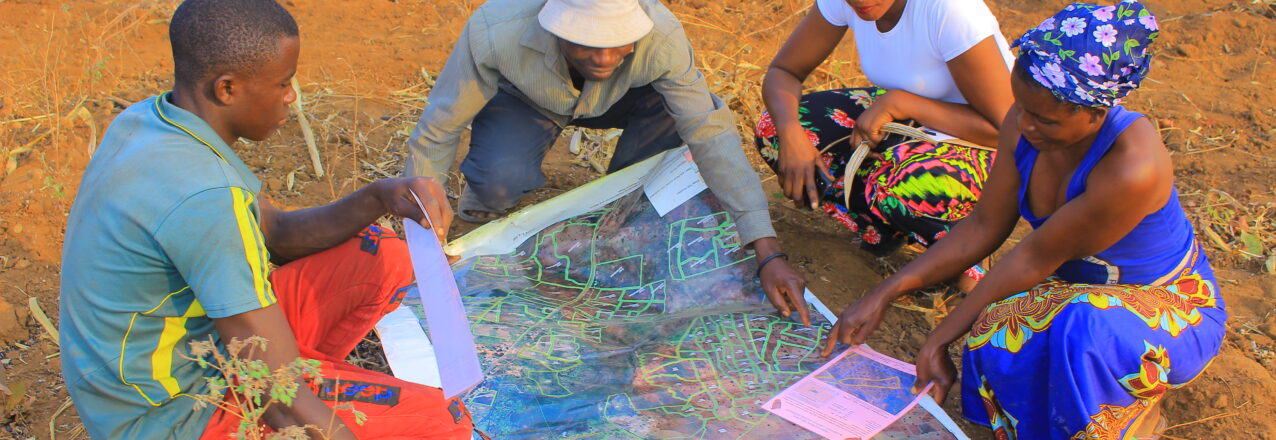The United States Agency for International Development (USAID) has been supporting first-time customary land documentation in Zambia’s Eastern Province since 2014, first with the Tenure and Global Climate Change program (TGCC) from 2014 to 2018, and now through the Integrated Land and Resource Governance program (ILRG). ILRG is working to identify opportunities to sustainably scale customary land documentation and administration processes as a way to support Zambia on its Journey to Self-Reliance.
ILRG has supported two local partners, the Petauke District Land Alliance (PDLA) and the Chipata District Land Alliance (CDLA) to test a fee-for-service model for first-time land documentation in selected chiefdoms in Eastern Province, following the land documentation methodology developed under TGCC. It is intended that the results of the tested model pave the way for these organizations, and other civil society organizations to provide beneficial, needed services to local communities without being entirely reliant on donor or government funding.
Although the fee-for-service model is still in its initial pilot, ILRG and its partners have already captured some important lessons learned which are useful not only for the project, PDLA, and CDLA, but also potentially for other organizations considering offering land documentation under a fee-for-service model.
Download the full document here.
KEY LESSONS
STRONG RELATIONSHIPS WITH TRADITIONAL LEADERS AND COMMUNITY GOVERNANCE STRUCTURES ARE CRITICAL. The willingness of chiefs to implement a fee-for-service model in their chiefdoms, combined with collaboration with community governance structures, was key to early success in generating community demand and interest in land documentation services. Strong interpersonal relationships between PDLA and CDLA staff and village headpersons and other local stakeholders helps ensure commitment, transparency, and accountability. Relationship building and training for village headpersons and community governance structures can help spread awareness and create demand for services. This requires a significant investment of time but can help mitigate the risk of confusion and misunderstanding. Village land committees can also help manage and organize the land documents produced.
SIGNIFICANT DEMAND FOR LAND DOCUMENTATION SERVICES EXISTS. Initially, not all community members saw the value in paying for land documentation services; with sensitization around the importance and potential benefits of land certificates, greater interest was generated. Most community members expressed willingness to pay the fees imposed under the pilot to document their land rights. Feedback in community consultations indicated that the demand was primarily driven by the desire for increased tenure security. Many community members expressed fear that pressure on land and resources from investors could lead to their dispossession, especially if their rights are undocumented.
MORE TIME NEEDS TO BE INVESTED IN STRATEGIZING AND DEVELOPING SOLUTIONS FOR ESTABLISHING A SUSTAINABLE FEE-FOR-SERVICE MODEL. While both organizations are working to refine their pricing and fee collection process, there are currently no set standards; fees vary from chiefdom to chiefdom depending on consent from traditional leaders. More consideration of cost recovery, cost effectiveness, and sustainability is required. Neither PDLA nor CDLA has thought through what fees to charge for modifying documents (for example, when land rights are transferred through inheritance upon the death of a community member, or where an individual marries and wishes to add their spouse to the land certificate). More research and analysis may be needed to assess household willingness and ability to pay and whether fees can be increased to come closer to cover the total cost of the service. In addition, the organizations need to consider whether the process can be streamlined and how delays in activities and fee collection can be reduced. ILRG has engaged a consultant with expertise in social enterprise to help think through some of these questions.
TARGETING OF LOCATIONS AND ADEQUATE SCALE IS NECESSARY FOR A FEE-FOR-SERVICE MODEL TO SUCCEED. Service providers need to be able to mobilize teams for many weeks, and thus need to ensure that there will be hundreds (if not thousands) of paying clients. While demand exists for documentation across the country, the need for it to protect households varies, as do the costs of providing the service. Extremely rural areas often present high logistical costs associated with documentation, and often include the poorest individuals who can least afford to pay. It is therefore unlikely that these areas will be prioritized by fee-for-service providers. In contrast, while in peri-urban customary areas near towns there is high demand and a greater ability to pay, many of these areas are already subject to tensions and conflicts that dramatically increase the price of service delivery. It is most likely that service providers will largely focus on a middle area of accessible agricultural land in close proximity to urban centers, where development and tenure pressures are expected, but may not be immediately present. Securing tenure in high pressure or active conflict areas, or in rural communities, will likely continue to require outside subsidization.


